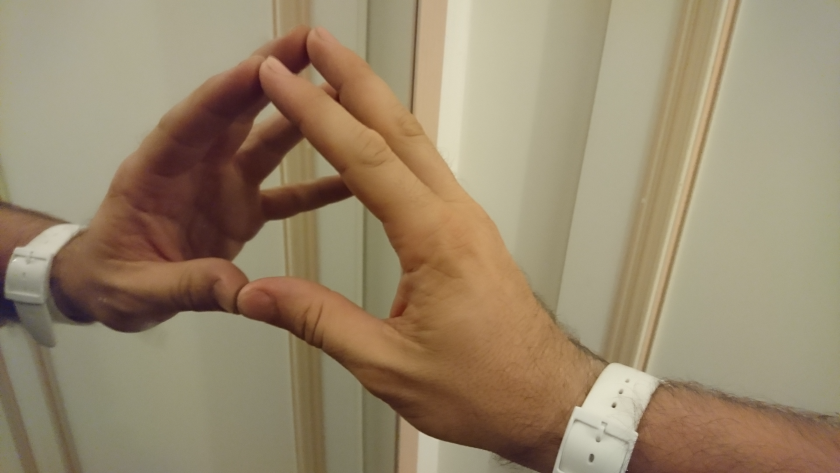Healthy Relationships
 Healthy Relationships are like searching for the Holy Grail in Disneyland.
Healthy Relationships are like searching for the Holy Grail in Disneyland.
According to recent relationship science only 11% of couples are in an emotionally secure and healthy relationship.
Which means that close to 90% of people in relationships are struggling or are deeply unhappy. That’s bad news for you and bad news for the billions of people effected by living in unhealthy relationships and relationship breakdown, including children, friends and family.
This is especially bad news for anyone, who is still idealistically looking for ‘the one’ or ‘Mr/Mrs Right’, especially those who’ve been reading those super-unrealistic spiritual shopping lists of the new requirements of what we can expect in an enlightened man or woman.
Let me just say this again only 11% of couples are in healthy and emotionally secure relationships, 50% of people currently married or in relationships will split up and get divorced, while the other close to 40% of couples live unhappily together, for the sake of their children, or just for convenience.
Your chances of happily ever after are slim, and this depressing science based figure of 11% seems so counter-intuitive and contrary to every romantic thing we’ve been fed by society, friends, western culture and the media.
We’ve all grown up with an unspoken romantic dream, that we’ll find someone, settle down and live happily ever after. That we’ll find someone who will make us happy, that will tick all of those boxes, that will fill that deep emptiness we feel in our hearts.
We’re born into a culture which paints happy and healthy relationships not only as the norm but something everyone can expect, and demand but without any real education about how relationships work or how we can make them work, it’s as though Nature and “Love” will take care of it. “All you need is love.” Or that “when you find your other half, you’ll feel happy, and you’ll be complete.”
You might assume that simply being a nice person, having intelligence, wealth and good looks might help to sustain a healthy relationship, but unfortunately the evidence doesn’t agree.
Pretty people don’t have better or longer relationships, as long as you’re earning enough money to cover your bills, being wealthy doesn’t help much either.
You might think that intelligence helps but it doesn’t, even the most intelligent and gifted people on the planet, really struggle to make relationships work: Einstein, Elon Musk and even Tony Robins (self-help guru), all succeeded in many areas of human endeavour where most people fail, but failed to be able to create and maintain long term healthy and secure relationships.
It seems that unhealthy relationships can’t simply be fixed with super clever thinking or problem solving, and healthy relationships can’t be created using state-of-the-art computer algorithms, well at least not just yet.
The most depressing statistic gleaned from ‘The Science of Happily Ever After” is that at very least 97% of singles on the dating scene are seriously unlikely to ever be able to build and sustain healthy secure, long term relationships.
But there is some slim hope.
There has been a lot of research in the field of relationships over the past fifty years, and the main evidence based science of relationship styles is called ‘Attachment Theory‘. In it they studied how very young children react to being left by their primary caregiver/parent and how the children and parent behave on their return and suggests that there are at least 3 main types of reactions, which to a large extent effect all of our subsequent relationships.
These are:
- Secure – loving, healthy inter-dependence where both parties feel safe to be together and be apart.
- Avoidant – needs aren’t met, they become overly independent and avoid real intimacy for fear of being hurt.
- Anxious– not sure if they are loved and constantly testing if they are loved, pushing and pulling.
Despite over 60% of the population claiming to be open and able to be in a secure relationships, as mentioned above, the proof is in the pudding and only 11% of couples are actually in a secure relationship.
The interesting thing to remember is that once a healthy loving couple are in a secure relation, it’s unlikely that those relationships will come to an end any time soon, but there is some movement in both directions approximately 3% of the population. Individuals can move from healthy to unhealthy relationships, and more importantly, people can move from anxious, avoidant relationships and personality styles into long term, secure and long-term healthy loving relationships.
And for a relationship to truly grow and blossom we need to be able to move from the anxious and avoidant styles into secure style relationships.
Therapists disagree about how to help people and couples in anxious or avoidant styles of attachment. Traditional talking therapists who have been educated and trained in Attachment Theory, suggest that their clients can learn to experience a form or surrogate secure attachment with the therapist. Others suggest that a form of talking therapy called Imago can be done within the dysfunctional relationship itself. The theory, which is based on a mixture of Attachment Theory and Freudian ideas, suggests that we are actually romantically attracted to people who are most likely to touch and open our deepest emotional wounds, respectively, and it is with our romantic partner that we can learn to talk and listen to each other in a way that both are understood.
There is hope! You can move from anxious or avoidant personality/relationship styles into secure personality and relationship styles.
Here’s how you can do it:
- Heal your relationship with your parents. This is perhaps the most challenging but most rewarding thing you can do to move your deep-seated relationship with life and current and future relationships from avoidant and anxious to secure and healthy. This might mean learning to understand and forgive your parents for not being perfect or indeed being neglectful or even abusive. This doesn’t mean you have to let them hurt you any more, but understanding that they were probably also neglected as children and their emotional needs were most definitely not met.
- Learn to accept that Life Loves You. Our primary relationship with our parents, is often transferred to how we view and experience the world around us. Our childhood reaction to our first relationships become an emotional lens which we view the world through. Life might therefore seem unfair, hard, painful or cold and unsupportive of who we are and our needs. But this can change, and you can learn to change your relationship with life and the whole world. Just as the Earth supports all of life, and provides for every creatures needs, so too Life loves and supports you.
- Be in more loving and secure relationships. If you’re already in a relationship and you both want it to work, then you can both help each other to create and model a more loving and secure relationship style. Yes, there will undoubtedly be difficulties, but as you both move to heal your relationships with parents and life, you’ll be able to create a better and healthier relationship in your current one. You can learn how secure relationships work and model, identify, feel and behave in ways that feel like secure and healthy relationship styles.
